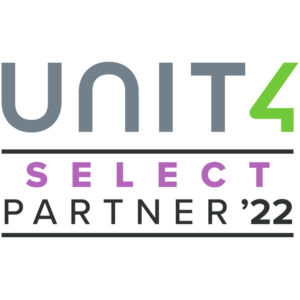When the term ROI is brought up in relation to ERP investments, it’s often assumed that an ROI calculation can’t be derived until a solution is selected and implemented. But, according to Nucleus Research’s ‘The ROI for ERP: An Overall Approach’ calculating an estimated ROI, before-hand, can help establish a solid baseline for comparison with the actual ROI of your ERP investment. It will also give your company a more realistic appraisal of the ERP solution(s) being considered. So, where should you begin?
First, Establish Goals & Objectives
This will require your organization to establish measurable goals and objectives that the proposed ERP solution will ideally fulfill. Establishing these goals and objectives, ahead of time, will provide monetary indicators as to how well your ERP investment is working to achieve your desired outcomes. Now, there may be some goals and objectives that you can’t measure in terms of dollars and cents, but a good majority of your goals should be relatively easy to attach a financial value.
For example, let’s say one of your objectives is to improve the overall visibility of your on-hand inventory – across all sales channels – and one of your goals is to reduce clearance stock by 20%. You can see how that particular goal / objective can easily be tied back to a monetary value and measured over a 3-5 year time period.
Tactics should also be attached to your goals and objectives. In other words, how you plan to monitor progress. You’ll find that building reports around your goals and objectives is likely going to be the most efficient tactic for measurement.
Listed below, you’ll find some basic goals and objectives to help your organization think through, what specifically, you’re looking to get out of your ERP solution.
| + Reduce the number of integrations & customizations | + More accurate demand forecasting |
| + Decrease maintenance costs by 5% annually | + Reduce infrastructure costs by 12% |
| + Faster order entry and enhanced order fulfilment | + Real-time reporting capabilities |
| + Upsell / cross-sell capabilities to help sales staff maximize profit | + Improved inventory visibility |
Next, Construct the Worst & Best Case Scenario
Once your goals & objectives have been established, you’ll want to implement “what-if” scenarios, which will require you to make some assumptions regarding the worst / best case scenario. For the best results, try to be more conservative with your estimated ROI calculation and lean more towards the worst case scenario (highest costs and the lowest upside). This will allow your organization to go into the sales process with eyes wide open, fully understanding the potential obstacles that lie ahead, so that you can better mitigate the risk involved with a complex ERP implementation.
ERP vendors / partners can be valuable assets when trying to calculate the pre-deployment ROI of your ERP investment. Especially those vendors / partners that have implemented ERP solutions for companies similar to yours. They can provide valuable insight as far as what to expect, and help you attach realistic metrics to your desired goals and objectives.
If your company is looking to calculate the pre-deployment ROI for your upcoming ERP project, and you need an experienced partner to help you through the process, feel free to contact us at [email protected]. And to stay In The Know, connect with us via social media, or check out more posts on our blog.






